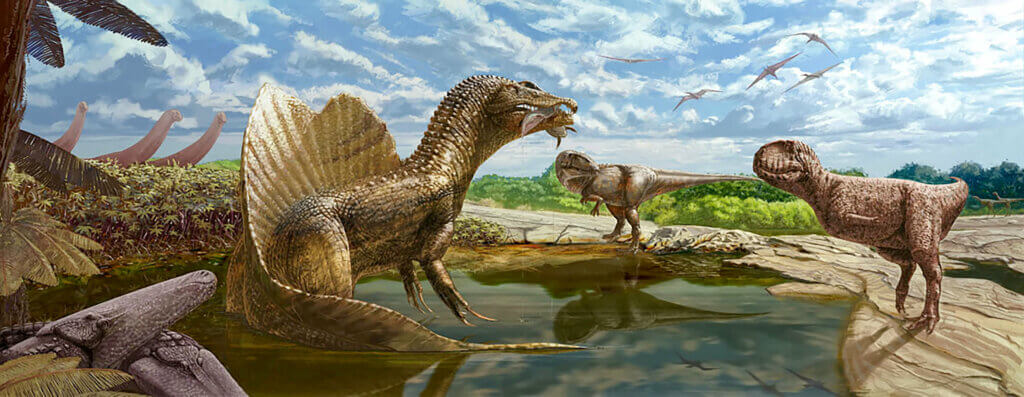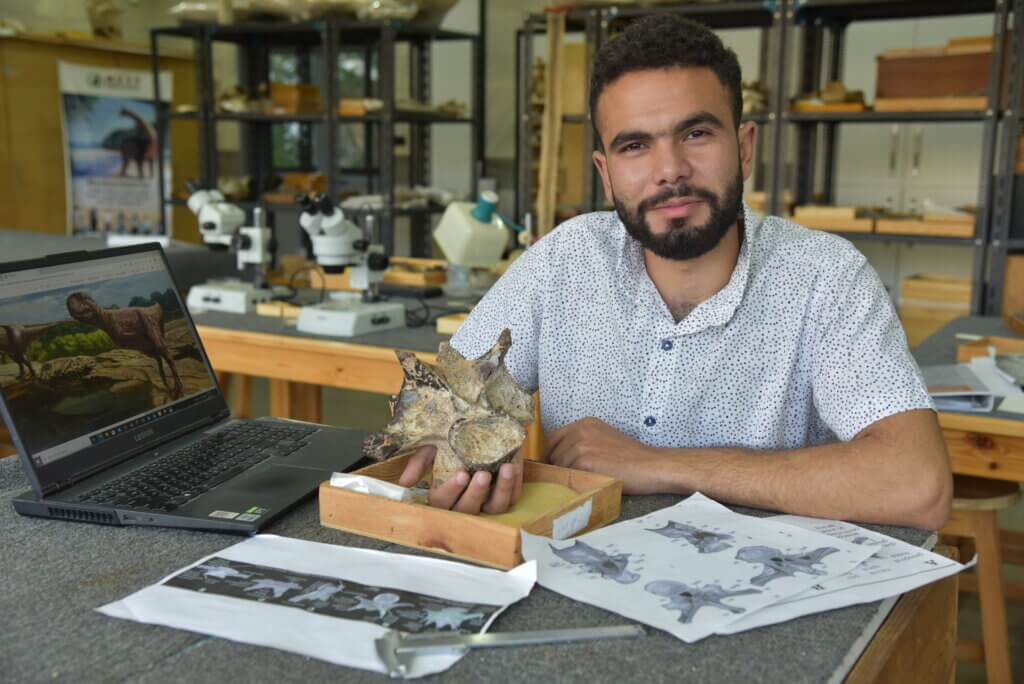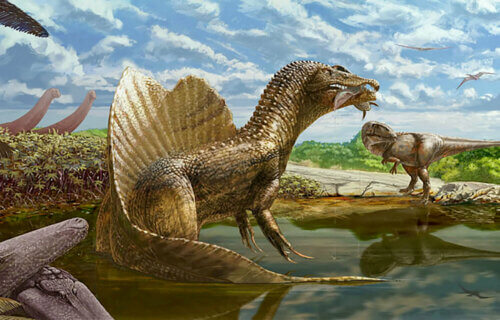ATHENS, Ohio — A spectacular crested dinosaur with a huge “sail” has been dug up in the Sahara, and scientists say it resembled a giant bulldog. The terrifying carnivore that roamed in the Cretaceous Period was 20 feet long and weighed three tons — as big as a school bus. It was likely the top predator in its area.
The unnamed theropod is a member of the abelisaurids and cousin of the feared Tyrannosaurus rex. Scientists unearthed the 98 million-year-old neck bone fossil at the Bahariya Oasis, about 180 miles southwest of Cairo. At the time, this site would have been one of the “most terrifying places on the planet,” notes lead author Belal Salem, a new student in the biological sciences graduate program at Ohio University.
“How all these huge predators managed to coexist remains a mystery, though it’s probably related to their having eaten different things, their having adapted to hunt different prey,” he explains in a statement.
Researchers describe the dinosaur as being “bulldog-faced,” with small, razor-sharp teeth. Like its T. rex cousin, it had stubby arms, but its huge claws made it all the more fierce. They believe it was a vicious killer with an extremely powerful bite, a keen sense of smell, and great speed. It even hunted Spinosaurus, famous for besting a T. rex in Jurassic Park III.

It lived by a river which flowed through the Sahara, lined by mangrove-like trees. Its most striking feature was the spinal sail, formed by elongated vertebrae connected by a membrane.
A series of flat bones beneath the skin reached six feet in length. They were covered by a network of fine veins. Blood pumped through them – flushing the sail with color. It might have changed hue to attract a mate, frighten an enemy and control body temperature by absorbing heat.
“Abelisaurids – most notably represented by the horned, demonic-looking Patagonian form Carnotaurus of Jurassic World and Prehistoric Planet fame – were among the most diverse and geographically widespread large predatory dinosaurs in the southern landmasses during the Cretaceous Period, the final time period of the Age of Dinosaurs,” the authors explain in a university release. “Along with Spinosaurus and two other giant theropods – Carcharodontosaurus and Bahariasaurus – the new abelisaurid fossil adds yet another species to the cadre of large predatory dinosaurs that roamed what is now the Egyptian Sahara roughly 98 million years ago.”
What are abelisaurids?
Abelisaurids were a family of apex predators that roamed the lands that are now South America, India and Africa. Scientists think they preyed on some of the largest dinosaurs, including titanosaur, a 70-ton herbivore larger than a blue whale. The discovery also shows the Trans-Saharan Seaway, a warm and shallow ocean that once covered the Sahara Desert, did not prevent their migration.
“The new dinosaur attests to a wide geographic distribution of abelisaurids across North Africa, and the extraordinary diversity of large-bodied dinosaurs from Egypt. This assemblage of dinosaurs appears to have extended across most or all of northern Africa during the Late Cretaceous,” Salem tells South West News Service. “It suggests the Trans-Saharan Seaway did not represent a significant barrier to large-bodied theropod dispersal at this time.

Multiple non-avian theropod dinosaur fossils have been reported from the Bahariya Formation. They include Spinosaurus aegyptiacus, Carcharodontosaurus saharicus, Bahariasaurus ingens and Deltadromeus agilis.
“Intriguingly, several of these forms – namely Spinosaurus, Carcharodontosaurus, Bahariasaurus and Deltadromeus – attained exceptionally large body sizes – comparable to that of Tyrannosaurus rex,” says Salem. “Though it undoubtedly pertains to a substantially smaller-bodied animal, the new abelisaurid confirms the presence of a fourth medium-sized to large theropod taxon in the Bahariya Formation paleoecosystem.”
The findings are published in the the Royal Society journal Open Science.
South West News Service writer Mark Waghorn contributed to this report.
